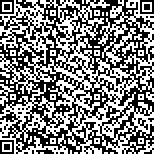| 摘要: |
| 本文面对智慧城市和新城市科学
迅速发展的背景,立足新时期城市设计转型
需求,针对新近涌现出的以机器学习、虚拟
现实、计算机可视化等为代表的多种新技术
和以街景数据、兴趣点数据、位置服务数据
等为代表的多源城市数据开展讨论。继而对
其所带来的城市设计新可能进行了探讨和展
望,并对于相关典型工具和代表性案例进行
了介绍。这些伴随新城市科学涌现的数据和
技术不仅能够为城市设计在场地分析、设计
开展和方案评估上带来工作方式的革新,而
且有望进一步明确城市设计的专属技术体
系,并以此推动城市设计的领域构建。 |
| 关键词: 新城市科学 城市设计 多源城市
数据 设计分析技术 |
| DOI:10.13791/j.cnki.hsfwest.20190102 |
| 分类号: |
| 基金项目:国家自然科学基金(51708410,51878428);
住房和城乡建设部科学技术计划北京建筑
大学北京未来城市设计高精尖创新中心开放
课题资助项目(UDC2017010412);上海市
浦江人才计划(17PGC107) |
|
| The New Potentials of Urban Design in the Context of New Urban Science |
|
YE Yu
|
| Abstract: |
| With the fast development of information and communication techniques, the
availability of new urban data and new analytical tools triggers the generation of a new science
of cities, i.e., data-intensive analysis and computational approaches of cities to pursue deeply
quantitative understandings. Urban design as an effort focusing on the making of lively urban
places is gradually transforming toward a more human-scale and quality-control direction,
which requires in-depth understandings on spatial features of the city and corresponded socioeconomic
performance. In this context, urban design that was mainly based on designer’s
experiences and intuition is facing new potentials generated from the new urban science.
This paper, as a reflection of this trend, discusses new analytical tools such as machine
learning, virtual reality, computer visualization, morphological analyses, and multi-sourced
urban data such as street view images, points of interest, location-based service, based on the
urban design transformation requirements. Specifically, the new analytical tools provide not
only in-depth understandings on urban morphology but also algorithms and computational
tools adaptive to complex built environment. The multi-sourced urban data provides not only
fine-scale and quantitative data recording features of urban spaces but also human perception
and behavior related to the spatial features. For instance, newly-proposed urban morphological
tools like UNA and Form Syntax, are able to achieve a co-present of various kinds of urban
morphological elements and their related performance. Newly-developed machine learning
algorithms like SegNet and the availability of large amount of street view images make the
measuring of streetscape features possible. In general, the integration of new urban data and
new analytical tools leads to improvements on three directions that were hard to achieve: 1)
fine-scale spatial data but also covering large areas at the same time, 2) quantitative description
of urban morphological features, 3) socio-economic performance affected by built environment.
These improvements were hard to achieve via classical methods decade ago, which might help
promote the further construction of urban design through the development of exclusive technical
basement.
It then explores the new possibility of urban design and introduces the related typical
tools and representative cases from the following three directions. Firstly, there are some
design assistant tools, e.g., Urbane and Vitalvizor, utilizing fine-scale open data and computer
visualization techniques to achieve a direct and clear 3D illustration between spatial features
and corresponded socio-economic performance. These real time and active analyses could
assist urban design processes from site analysis, idea generation, proposal evaluation, etc.
Secondly the combination of multi-sourced urban big data and computation algorithms in
machine learning would assist urban designers and planners to measure the immeasurable in
the past that includes many intangible issues like spatial quality and vitality. Improvements
in this direction would assist smart and efficient design policy on the key points. By this way,small design improvements would lead to large outputs on public benefits. Improvements in this direction might help promote better quality and
vitality making in design practices. Moreover, the utilization of new techniques like VR and wearable devices, and detailed urban data would assist
the achievement of perceptual-based design evaluations. This kind of human-scale approach would be easier to achieve more accurate analyses,
compared with intuitive feelings.
In short, the emerging new techniques and new data in the context of new urban science is bringing new possibilities to seek in-depth
understandings on urban design and regeneration for better place-making and smart decision making. Many urban design processes that were
traditionally inspired by intuition can now be supported by a scientifically grounded analysis, combining creativity and rationality into one
framework. Although these presented studies and cases are still exploratory, they move a step forward and supplement classical urban design
theories with quantitative measurements. These studies also help to achieve an efficient large-scale analysis but also keep fine-scale spatial
resolution. It is a response to the increasing interest in introducing new quantitative thinking into urban design. It indicates a transformation
towards the paradigm shift of urban analytics-linking science, engineering, design and information technology. Endeavors in this direction would
better connect design practices and researches, as a way to advance further development of research by design. |
| Key words: New Urban Science Urban Design Multi-sourced Urban Data Design-oriented Analytical Techniques |


